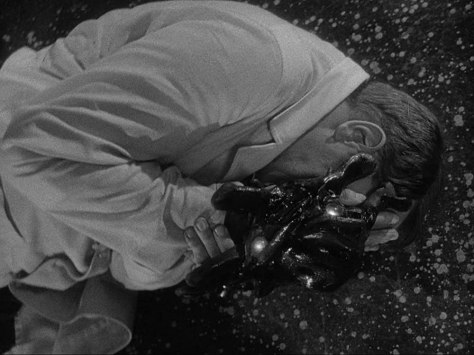
So, who were the people behind all the drive-in filler in the seventies? Sometimes, it was small-time movie industry outcasts, as we saw in Blood Freak—but in this case, it was Hollywood veterans trying desperately to stay in the game in whatever way they can. The Cremators was written and directed by Henry Essex, who was the writer or co-writer of both It Came From Outer Space and The Creature From the Black Lagoon, two of the most significant entries in the fifties Sci-Fi and monster movie canons. He otherwise mostly stuck to either crime films or TV, but apparently thought he could return to his glory days in the seventies, writing and directing both this movie and the previous year’s even more infamous Octaman. You can certainly find a vein of that fifties B-movie energy in Cremators—it’s based on a high concept monster and features a lot of standing around trying and mostly failing to make sense of that high concept monster—but unlike the mid-sixties movies I’ve written about previously, this is very clearly trying to feel contemporary. Maybe that’s part of the issue: reminding you that it is 1972, with colour and almost two decades of movies to compare it to, does something like this very few favours.



